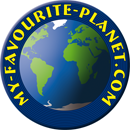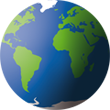|
|
|
| My Favourite Planet > English > Europe > Greece > Attica > Athens > galleries > Acropolis |
|
| |
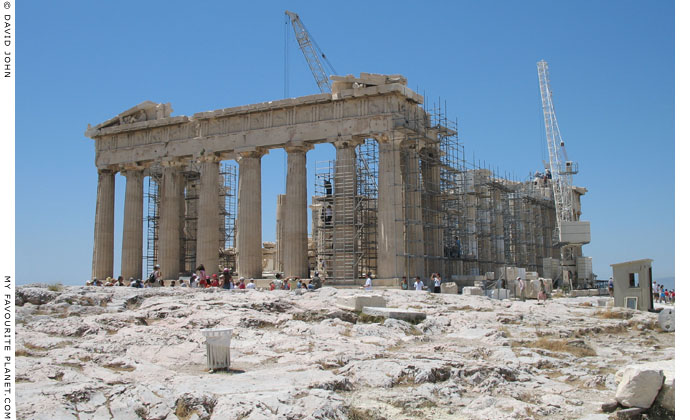
The east side of the Parthenon |
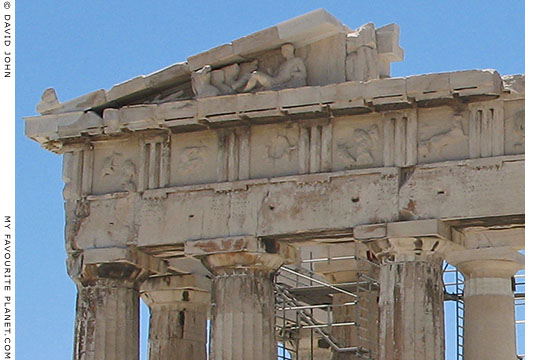
Detail of the entablature and pediment of the east side of the Parthenon. |
| |
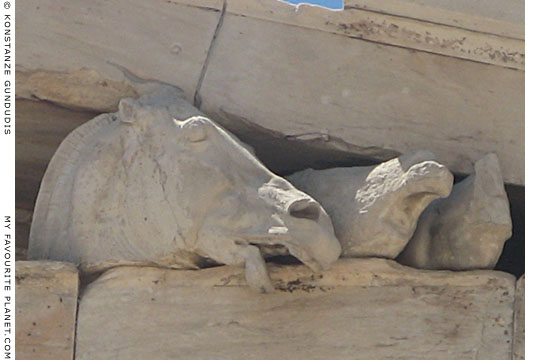
The heads of the horses of the moon goddess Selene's four horse chariot.
On the north corner of the east pediment of the Parthenon. Circa 438-432 BC. |
| |

Metope with a relief of Pegasus on the east side of the Parthenon. |
|
| |
| |
| |
|

A Doric column
of the Parthenon. |
|
| |

A Perspective section drawing (cutaway) of the east end of the Parthenon by the
German-Austrian architect and archaeologist George Niemann (1841-1912) [1]. |
| |
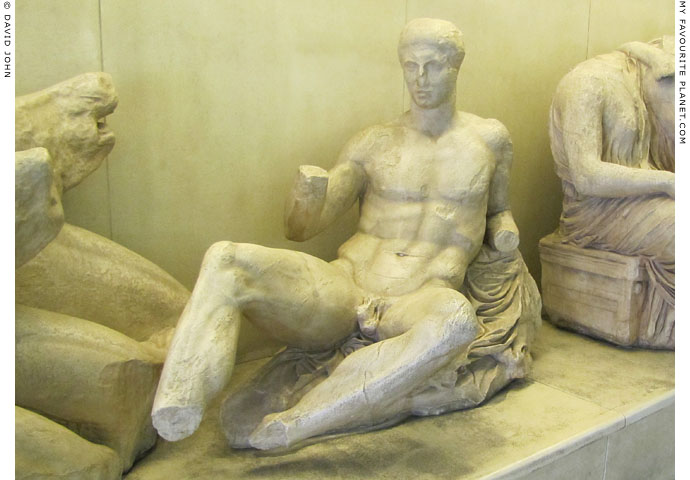
A cast of the marble sculpture of Dionysus from the east pediment of the Parthenon,
on permanent exhibition in the Acropolis metro station, Athens. Width 1.3 metres.
See a photo of the original in the British Museum, Inv. No. 1816,0610.93 (East pediment D).
|
The pedimental sculptures of the Parthenon were made of Pentelic marble by Pheidias and his pupils 438-432 BC. According to Pausanias (Description of Greece, Book 1, chapter 24, section 5), the theme of the east pediment was the birth of Athena, and that of the west pediment the contest between Athena and Poseidon for the patronage of Athens.
Each of the sculptures is actually a free-standing statue, executed in the round, rather than reliefs known from other temple pediments (see for example the high relief of Dionysus from the Temple of Apollo in Delphi). They are remarkably detailed and finished, particularly considering that they stood so high on the Parthenon that many parts would not be visible to the viewer on the ground. An entire pediment can be seen only when standing some distance from the building; the view of the figures from the angle shown in the photo above was not possible when they were in place.
"Figure D", the only sculpture of the pediments still with an intact head, has been identified as Dionysus, although Herakles and Theseus have also been suggested. The youthful, athletic god is shown lounging on a rock covered with a panther skin, between the horses of the chariot of the sun god Helios (left) and the seated female figures, thought to be Demeter and Persephone (right). If this is Dionysus, he may have held a wine cup in his missing right hand. |
|
|
 |
|
|
| |
| |
 |
| |
 |
| |
 |
| |
 |
| |
 |
| |
 |
| |
George Alvanos
rooms in
Kavala's historic Panagia District
Anthemiou 35,
Kavala, Greece
kavalarooms.gr
|
| |
Olive Garden Restaurant
Kastellorizo,
Greece
+30 22460 49 109
kastellorizo.de
|
| |
Papoutsis
Travel Agency
Kastellorizo,
Greece
+30 22460 49 286
greeklodgings.gr
|
| |
| |
| |
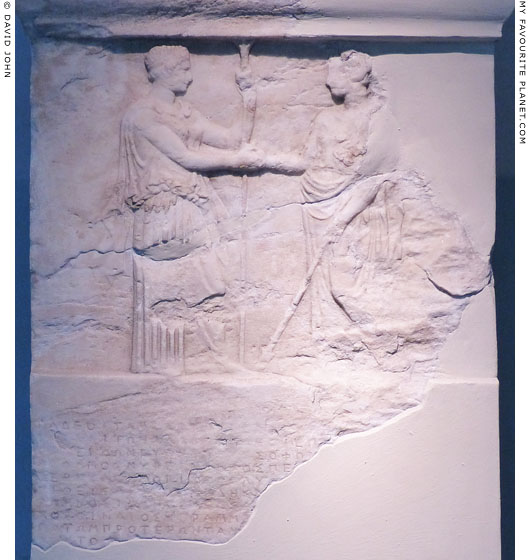
Fragment of an inscribed marble stele with the accounts of the treasurers
of the goddess Athena and other gods. 401/400 and 399/398 BC.
The relief shows Athena and Hera clasping hands.
Acropolis Museum, Athens. Inv. No. EM 7862.
From the Athens Epigraphical Museum. |
| |
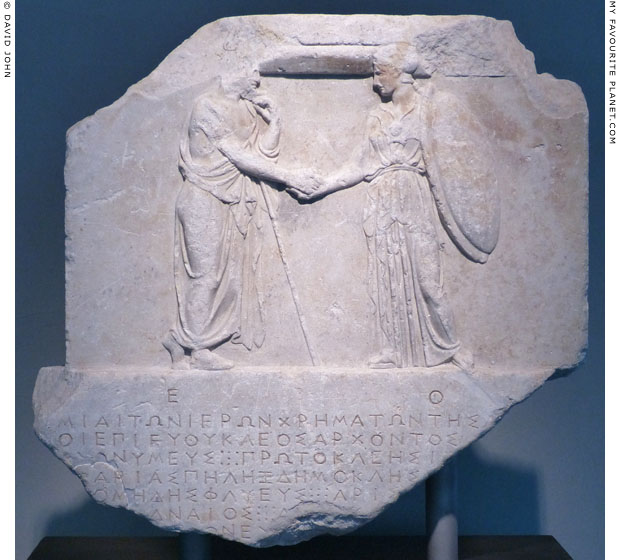
Fragment of an inscribed marble stele with the accounts of the treasurers
of the goddess Athena and other gods. 397/396 and 376/375 BC.
The relief shows Erechtheus and Athena clasping hands.
Acropolis Museum, Athens. Inv. No. EM 1479.
From the Athens Epigraphical Museum. |
| |
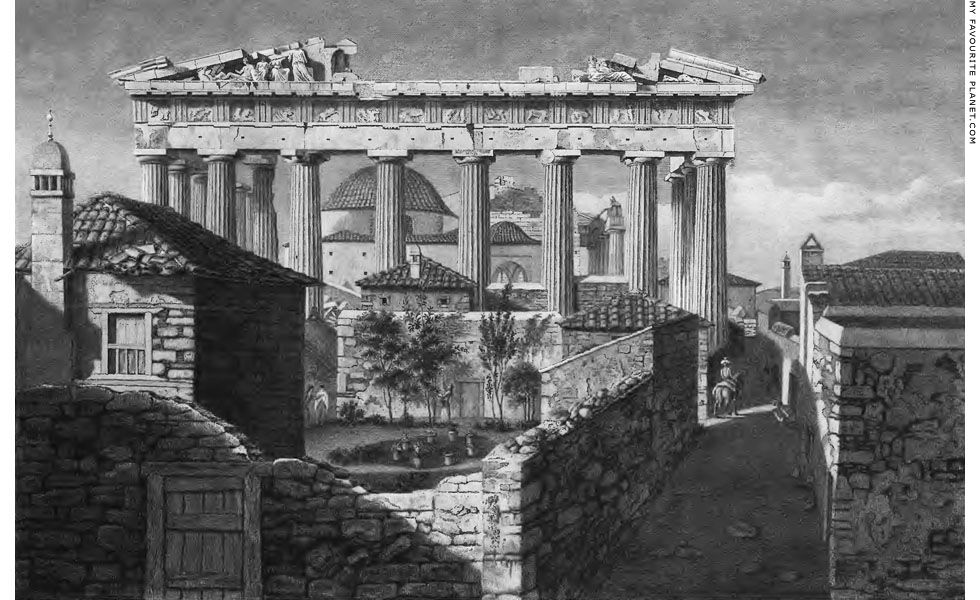
An engraving of a watercolour by James Stuart of the
east side of the Parthenon in the mid 18th century.
|
Stuart drew the scene during his stay in Athens 1751-1753 with fellow architect Nicholas Revett (see Acropolis gallery page 12). Around the Parthenon are the houses and gardens of the Turks who lived on the Acropolis, which was used as a fortress, garrison and administrative centre. The Parthenon itself had been badly damaged on 26 September 1687 by a mortar fired from the Philopappou Hill, during the siege of the Acropolis by the army of the Venetian general Francesco Morosini. The direct hit struck the gunpowder stored in the building by the Turkish defenders.
Stuart noted: "This front was more injured by the explosion of the powder, which happened during the siege already mentioned, than the front facing the west, for here much the greater part of the pediment is wanting. In the space between the columns is seen the present moschea, built within the area of the Parthenon."
A church dedicated to the Virgin Mary, (Panagia Atheniotissa or Panagia Castriotissa, Our Lady of the Acropolis), had been built inside the Parthenon at the end of the 6th century and was the metropolitan church (cathedral) of Athens (see image below). Following the Ottoman conquest of Greece, the church was converted into a mosque in the early 1460s. After the Venetians had withdrawn from Athens it was retaken by the Turks who rebuilt the mosque. The church and mosque were built with material from other ancient monuments. Stone from the Philopappou Monument, for example, was used to build the minaret.
Image source: James Stuart and Nicholas Revett, The antiquities of Athens, measured and delineated, Volume II, chapter I, plate I. John Nichols, London, 1787. At the Internet Archive. |
|
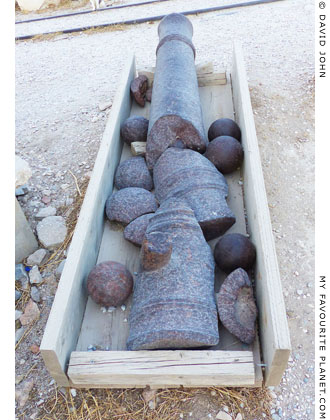
A remains of a cannon and cannon balls
in a wooden box, near the southeast
corner of the Parthenon The cannonballs
are too large for this small-bore gun. |
|
| |
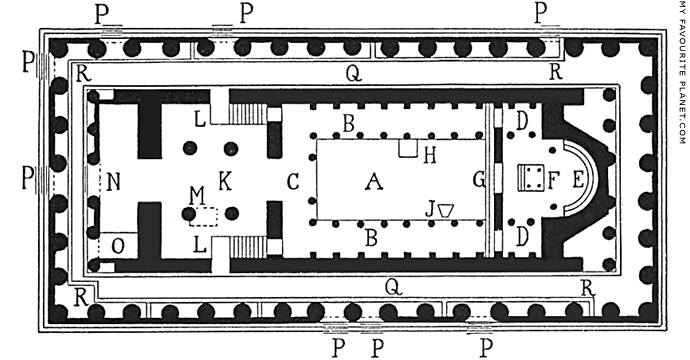
A plan of the Our Lady of the Acropolis church in Parthenon,
Source: Adolf Boetticher, Die Akropolis von Athen: nach den
Berichten der Alten und den neusten Erforschungen, Fig. 1, page 15.
Julius Springer, Berlin, 1888. At Heidelberg University Digital Library. |
| |
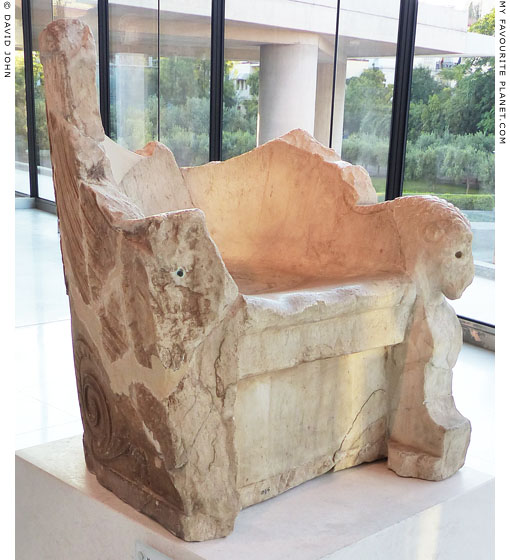 |
|
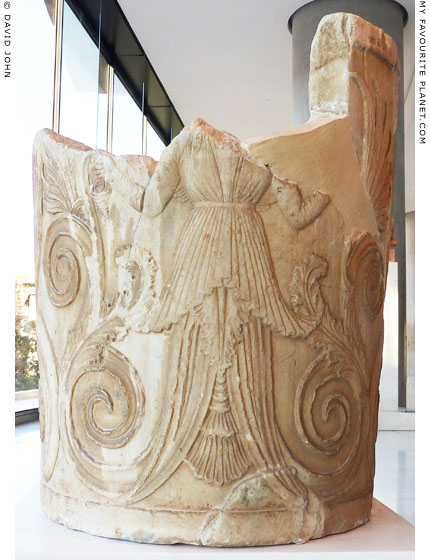 |
A marble throne from an ancient public building later used
as an episcopal throne in the church in the Parthenon.
3rd - 2nd century BC. Pentelic marble, with large imbedded crystals.
Restored from nine fragments found in 1836 between the peristyle
and the pronaos of the Parthenon. Height 75 cm, width 65 cm.
Acropolis Museum. Inv. No. Acr. 1366.
See: Stanley Casson, Catalogue of the Acropolis Museum, Volume II:
Sculpture and architectural fragments, pages 278-280, Cat. No. 1366.
Cambridge University Press, 1921. At the Internet Archive.
|
|
The dating of the throne is based on the style of the decoration and the lettering and character of a partial inscription on the front, beneath the seat. At some time after its discovery the throne was damaged and most of the inscription is now illegible.
Three other almost identical (Stanley Casson: "exactly similar") marble thrones are known:
State Museums Berlin (SMB). Inv. No. Sk 1051. Pentelic marble. Height 76 cm, width 70 cm, depth 67 cm. Purchased for the museum in Rome by Friedrich von Duhn in 1878. Previously in the Nani Collection, Venice. Thought to have been found in Sabina (the Sabine Hills), north of Rome.
See: arachne.uni-koeln.de/item/objekt/2342, at the University of Köln Archaeological Institute.
The "Throne of Saint Gregory the Great", at the entrance to a side chapel in the San Gregorio Magno church on the Caelian Hill, Rome. With the throne in Athens, the best preserved.
A "Roman throne" of Greek marble ("probably Pentelic"). Isabella Stewart Gardner Museum, Boston. Inv. No. S5c4. Height 64.14 cm, width 66.68, depth 66.68 cm. Said to have been discovered at Telesina (today Telese Terme), southern Italy. Purchased by Isabella Stewart Gardner from an unknown dealer in Rome for 13,000 lire on 25 October 1901, through the art historian and archaeologist Richard Norton (1872-1918). Pronounced as a modern forgery by some scholars. Only the first word is legible of a badly worn inscription on the front, beneath the seat. From a squeeze taken by the classicist Gisela Marie Augusta Richter in 1954, the inscription has been restored as LICINIAE *L *F *POST[V]MI (Of Licina, daughter of Lucius, wife of Postumus).
See: www.gardnermuseum.org/experience/collection/11265
The three thrones have been dated to around the 1st - 2nd century AD, and were thought to be Roman period replicas of the throne found in Athens. However, it has been suggested that all four may have been made in the Roman period, perhaps as early as the 1st century BC, and were copies of a 4th century BC Hellenistic original.
See: Gisela M. A. Richter, The marble throne on the Akropolis and its replicas, American Journal of Archaeology. Volume 58, No. 4 (October 1954), pages 271-276. At jstor.org.
Each side of all four thrones is decorated with a relief of a winged lion-griffin with hind quarters in the form of a large acanthus scroll. Their heads form three-dimensional ends to the arms of the seat. At the back is an Archaistic relief of a bearded male wearing a fillet (headband) and polos, and a long-sleeved Persian costume. He has recurving (spiral) wings and legs in the form of acanthus and palmette scrolls, a bud of which he holds in each of his outstretched hands. The head and left hand of the figure are missing on the throne in Athens, but are well preserved on the Berlin example. |
|
| |
| The Parthenon |
Notes, references and links |
 |
|
1. Cutaway drawing of the Parthenon by George Niemann
Source: Anton Springer and Adolf Michaelis, Handbuch der Kunstgeschichte, Band 1: Das Altertum, Fig. 103, page 65. E. U. Seemann, Leipzig, 1898. At Heidelberg University Digital Library.
Several verions of this drawing have been published as etchings and engravings since its first publication in: Otto Benndorf (editor), Wiener Vorlegeblätter für archaeologische Übungen, 1875, plate 12. Vienna, 1875. |
|
|
Photos, illustrations, maps and articles: © David John,
except where otherwise specified.
Additional photos: © Konstanze Gundudis
All photos and articles are copyright protected.
Images and materials by other authors
have been attributed where applicable.
Please do not use these photos or articles without permission.
If you are interested in using any of the photos for your website,
project or publication, please get in contact.
Higher resolution versions are available on request.
My Favourite Planet makes great efforts to provide comprehensive and accurate information across this website. However, we can take no responsibility for inaccuracies or changes made by providers of services mentioned on these pages. |
|
| |
 |
Visit the My Favourite Planet Group on Facebook.
Join the group, write a message or comment,
post photos and videos, start a discussion... |
|
|
| |
| Copyright © 2003-2025 My Favourite Planet | contents | contributors | impressum | sitemap |
| |
